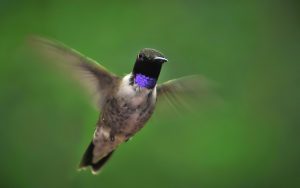Swallows are fast and acrobatic birds. Rather than a song, these birds have cheerful chattering calls. All species are insectivorous, and can often be found where swarms of insects congregate, such as fields, water, or your porch light.
Texas has 8 species in the swallow family. Several are common at houses, buildings, parking garages, and along roadways. Some will use artificial nest structures. Most species are seasonal, and some are regionally restricted.
Swallow species that live in Texas:
- Barn Swallow
- Cave Swallow
- Cliff Swallow
- Tree Swallow
- Northern Rough-winged Swallow
- Violet-green Swallow
- Bank Swallow
- Purple Martin
What swallow is building a nest on my porch?
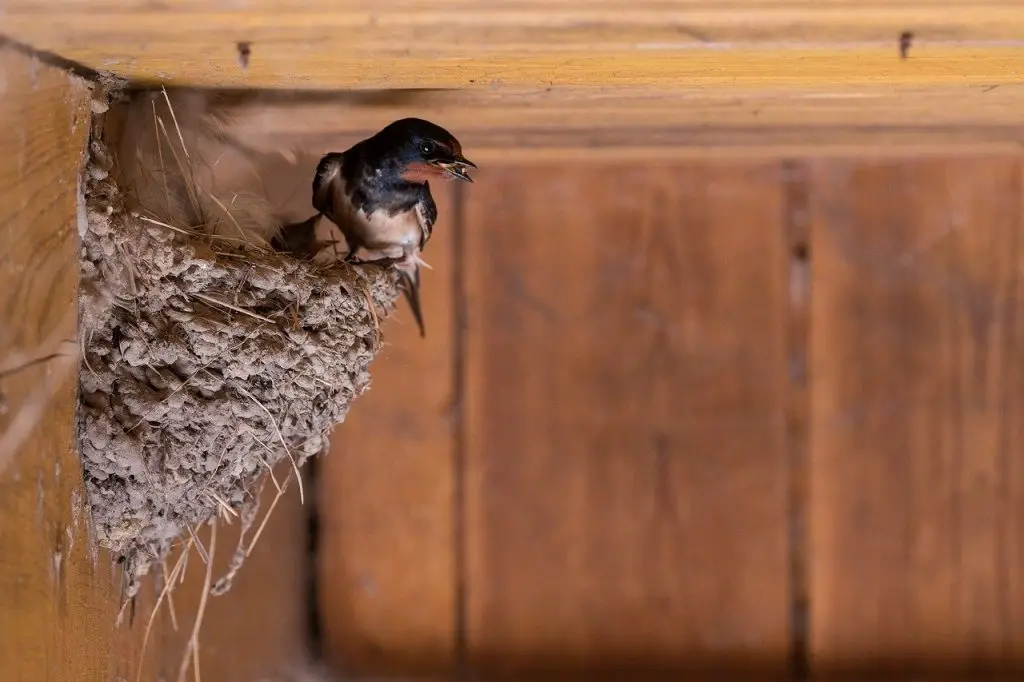
Most likely, you have a pair of Barn Swallows. These birds are well habituated to human presence, and find your porch overhang to be a safe and inviting spot to raise a family. Barn Swallows arrive in Texas around March and begin to migrate south by July, though you may still see them through October.
Some find these birds to be a nuisance, but their nesting sites are federally protected under the Migratory Bird Treaty Act, so please do not disturb an active nest (once eggs are laid) until the birds have finished raising young and are gone for the season.
Prevention of future nest building is best done by knocking down nest structures (physically or with a spray of water) at the first sign of nest-building.
A tip from the Professional Pest Manager is to place a tennis ball into the nest before eggs are laid; the nest can then be removed after the birds have left the area or are building a nest in a more-appropriate location.
Swallow or Swift?
Texas has two swift species that might get confused for swallows: Chimney Swifts and White-throated Swifts. Swifts are in a different family (Apodidae) from swallows (family Hirundinidae) and are more closely related to hummingbirds.
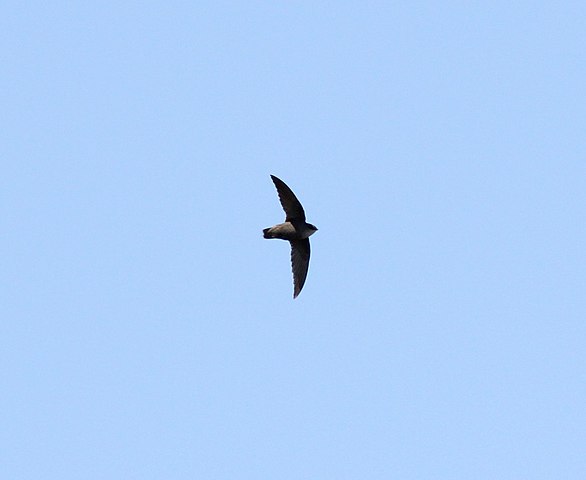
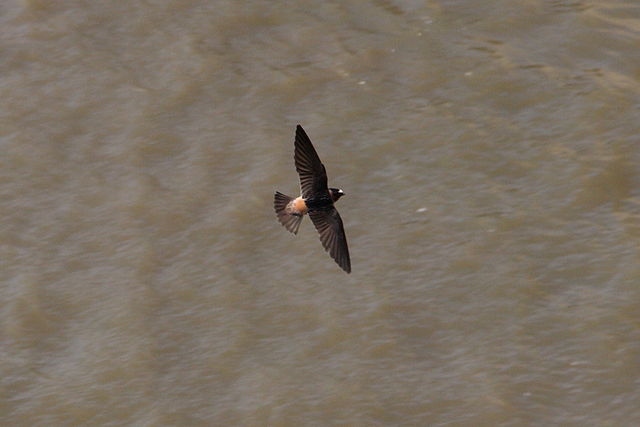
A nickname for Chimney Swifts is “flying cigars”, because they have a cigar-shaped body. Swift wings are typically longer and thinner than a swallow, with a back-curved shape and narrow points. Their coloration is a dull grey and black. These birds have stiff movements, often hunt at high altitudes, and are never seen perching.
The less-common White-throated Swift is most easily found in west Texas desert along high cliff edges, and has a black and white contrasting look with a shallowly forked tail.
Barn Swallow
- Deeply forked tail
- Blue on head and back, light cream color underneath
- Commonly nests around buildings and houses
- Migratory, present March – October
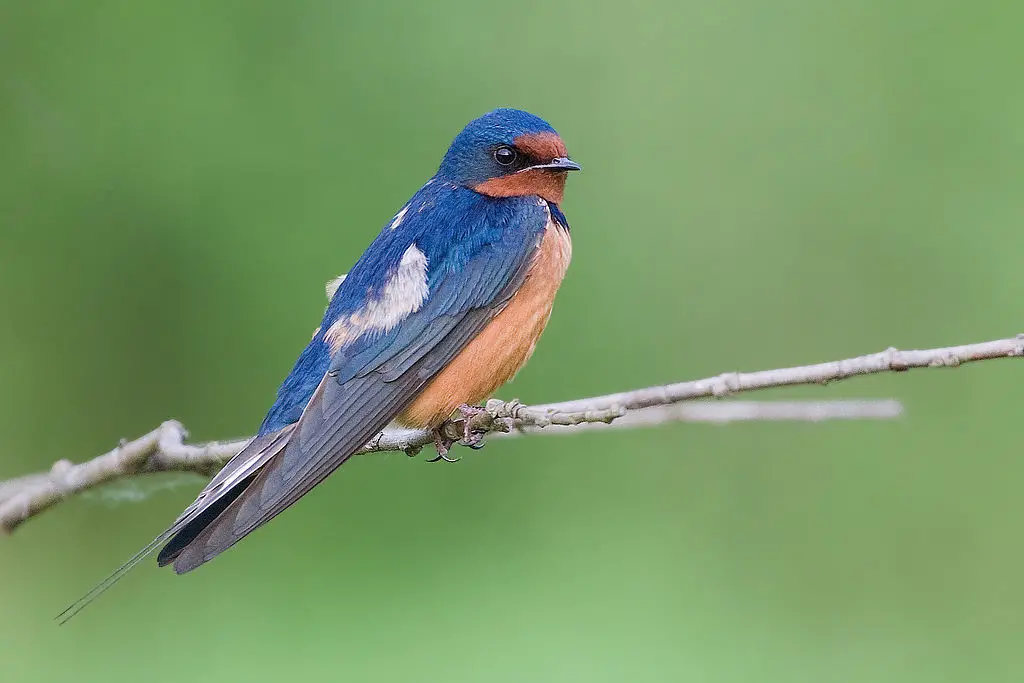
This is the most common swallow in many urban settings, with pairs often building an open mud-cup nest at homes and office buildings. Barn swallows can also be found just about anywhere someone might be looking for birds in Texas during the spring and summer seasons.
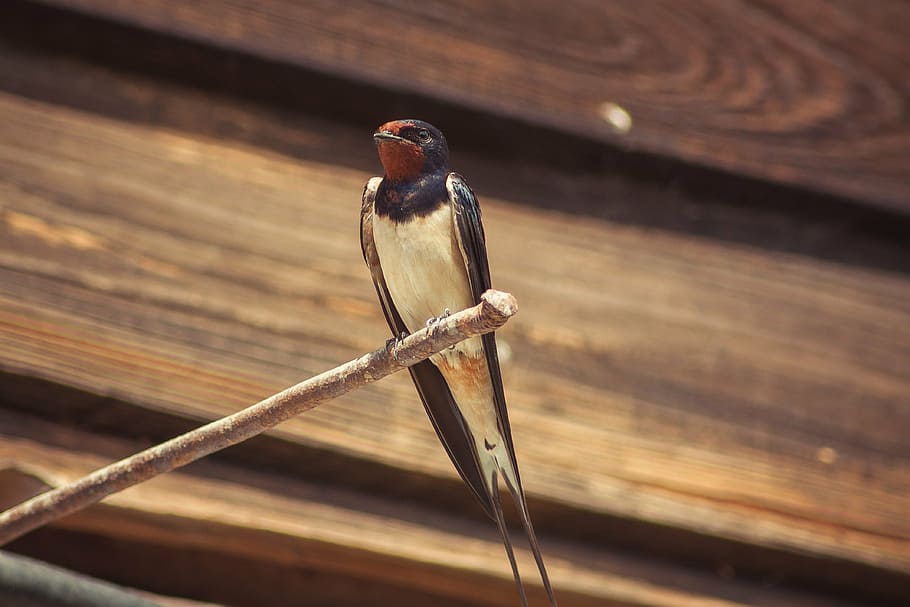
The best way to quickly identify them is by their long, deeply forked tail; other swallow species lack this characteristic. If you have a nesting pair, you may also become familiar with their chattering noises, which can help pick them out at other locations.
Barn Swallows breed and migrate through Texas, but are not here during late fall and winter seasons; like many swallow species, they migrate to Central and South America.
Cliff Swallow
- Bright white forehead
- Short, straight tail and short, rounded wings
- Commonly found in large nesting colonies under bridges
- Migratory, present March – October
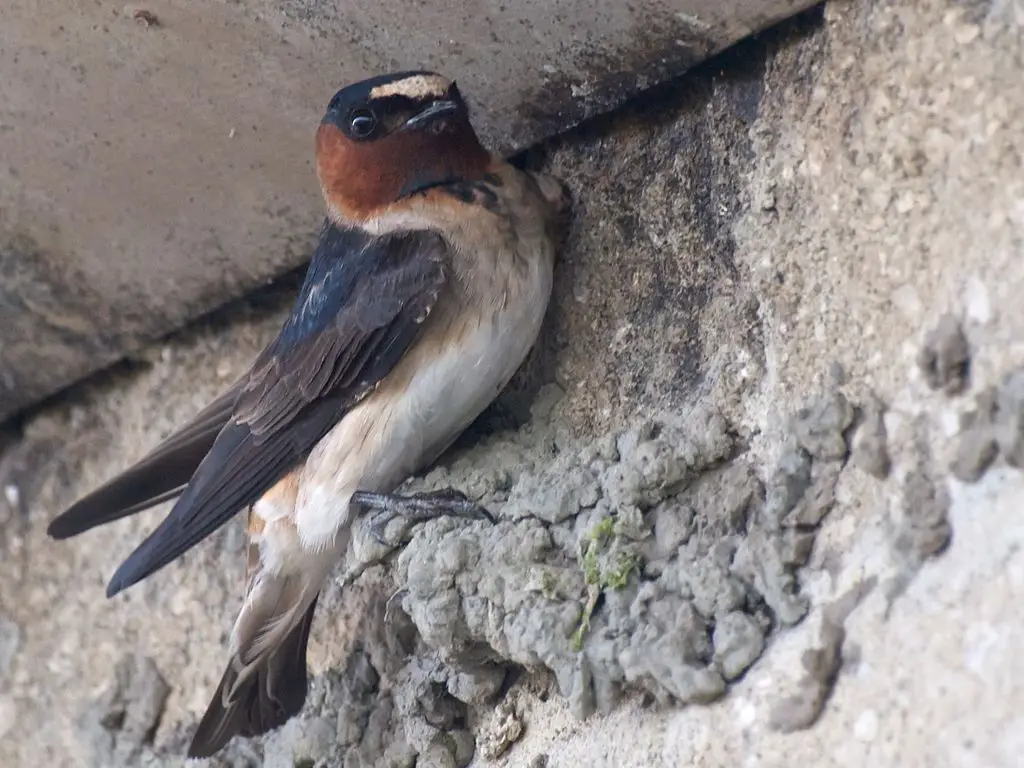
Cliff Swallows are even more colorful than Barn Swallows, and are best identified by a bright white patch on the face above the beak. The species most similar to this one is the Cave Swallow described below, which lacks the white patch on the face. While the white patch is the easiest identifier, juveniles and birds nesting in southeastern Arizona and Mexico may lack the white patch.
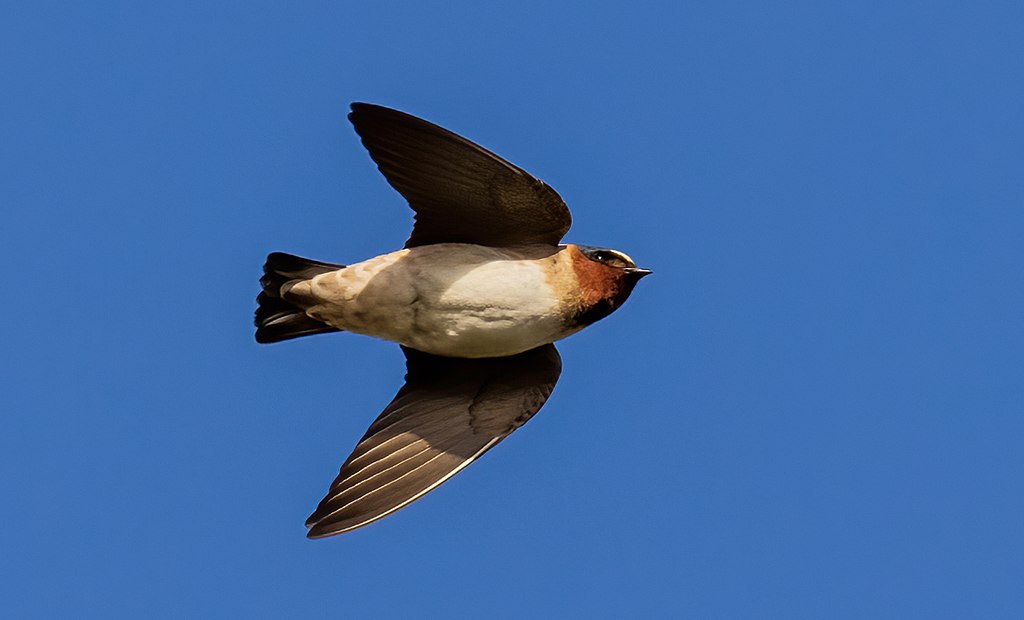
Cliff and Cave Swallows can often be found nesting together in large colonies, and sometimes Barn Swallows are mixed in as well. Colonies are often located on bridges, buildings, and parking garages, and more-natural locations include rocky cliff edges and cave entrances.
Cliff Swallows build gourd-shaped, completely enclosed, mud nests with small entrance holes.
Cliff Swallows are seasonal, migrating to South America for the winter.
Cave Swallow
- Dark orange/red patch on the forehead
- Very similar to Cliff Swallow
- Commonly found in large nesting colonies
- Range-restricted and seasonal, but year-round residents in south Texas
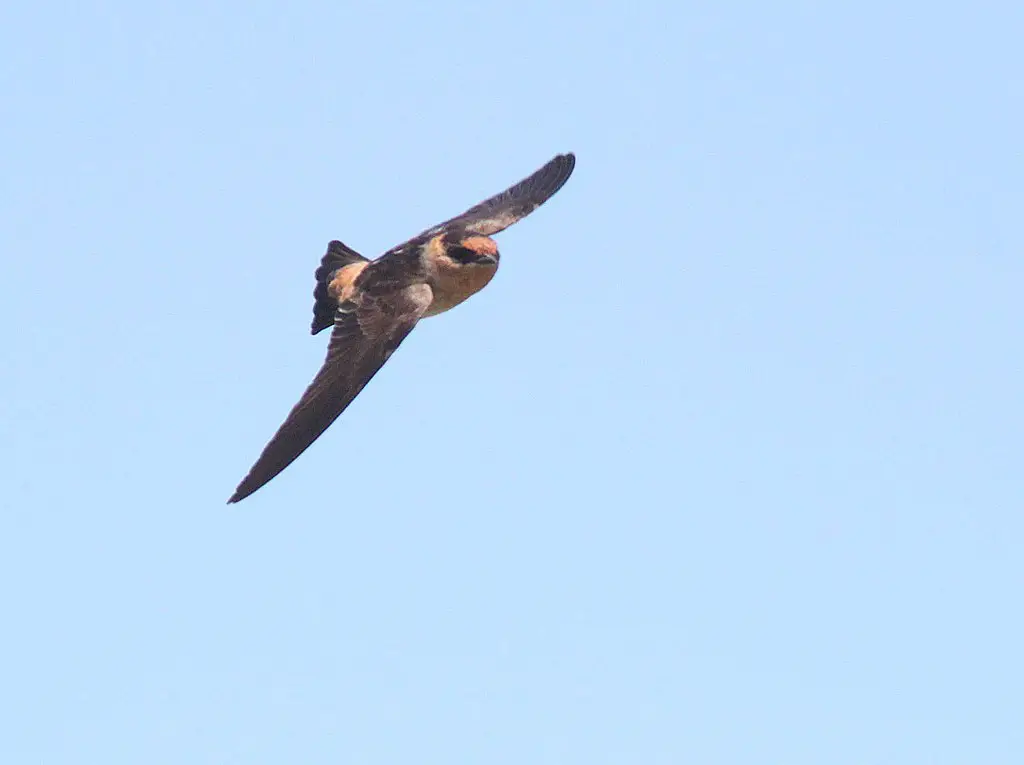
Despite the name, Cave Swallows do not only nest in caves. They can be found along cliff sides, canyons, and bridges along roads and highways.
Cave Swallows are year-round residents of southern Texas, while Cliff Swallows are a migratory, seasonal species. This means that if you see a swallow there during winter, its likely to be a Cave Swallow, though the Tree Swallow also uses South Texas as a wintering range.
Cave Swallows occur throughout the middle of Texas, but are less likely to be found east of Dallas, west of Odessa, and north of Lubbock, and rarely appear north of Amarillo.
Cave Swallows build partially enclosed (or open) cup nests, with larger entranceways than Cliff Swallows. However, all three swallows mentioned so far might use an already-constructed nest abandoned by another species, making nest shape a far-from-perfect tool for identifying species.
Tree Swallow
- Iridescent blue/green on head and back
- Nests in tree cavities and artificial nest boxes
- Present in low numbers September – May
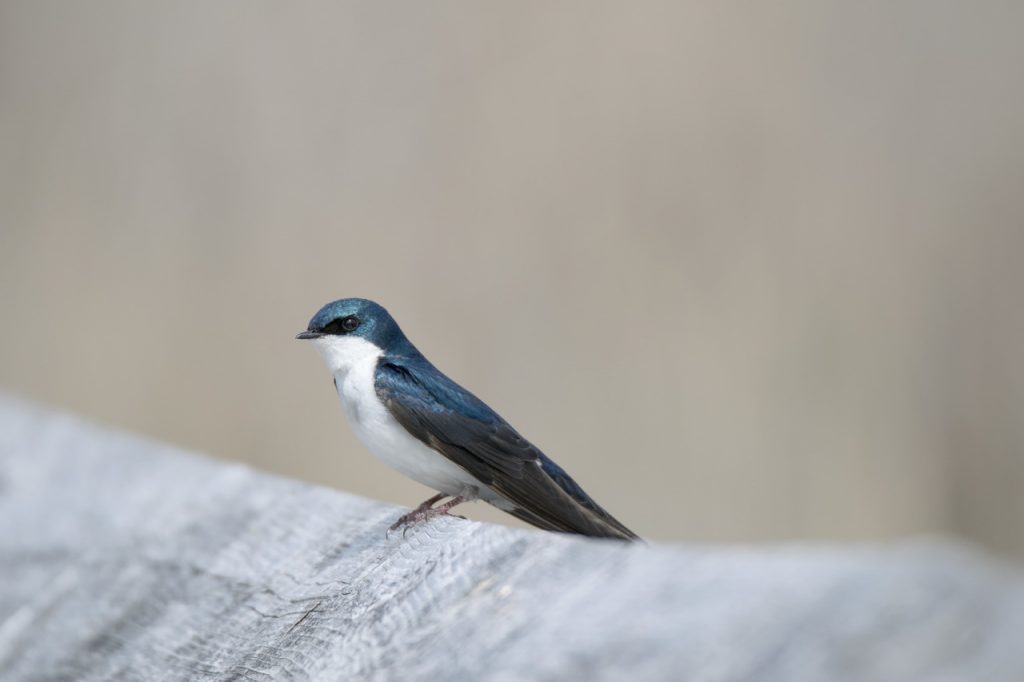
Tree Swallows are only found breeding in eastern Texas, but can be found throughout the state during migration and overwintering in the southern half of the state.
Most similar in shape as Barn Swallows, but the tail is less forked and it lacks orange colors.
Tree Swallows are cavity nesters, which means they do not build a nest like the above species, but instead look for cavities created by woodpeckers and other natural formations. They may use Bluebird-sized nest boxes.
Unlike the above species, Tree Swallows do not nest in colonies. But, they may congregate over good feeding grounds during summer, and occur in large flocks during migration and winter. If you are in Trans-Pecos, southern, or coastal Texas during winter and find a flock of swallows on a powerline or fence, it is most likely Tree Swallows.
Northern Rough-winged Swallow
- Dull brown and grey, with white belly
- Mostly found near water
- Migratory and seasonal, year-round residents in some areas
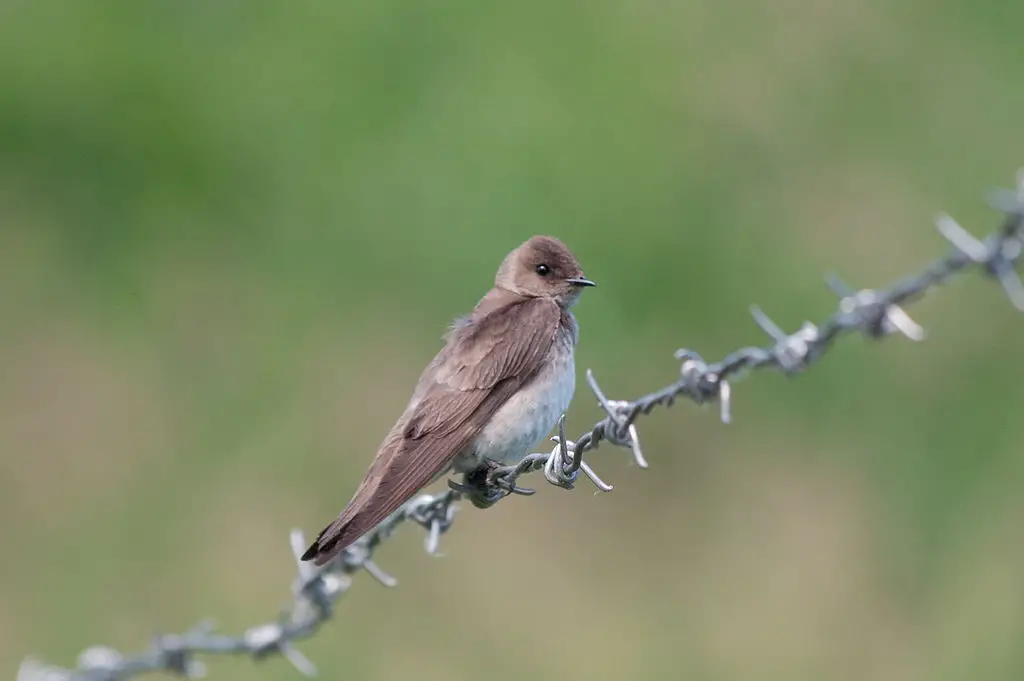
Northern Rough-winged swallows breed throughout the state and are year-round residents along the southern border and coastline.
Similar to Tree Swallows, these birds are cavity nesters, but they prefer holes in sandbanks, crevices in cliffs, and open pipes. They do not nest in colonies.
This species is most likely to be confused with a juvenile Tree Swallow, or possibly drab juvenile Cliff Swallows. Look for a fork in the tail to detect a juvenile Tree Swallow, and look for hints of extra coloration on juvenile Cave and Cliff Swallows.
Northern Rough-winged Swallows will lack a fork in the tail and will have very uniform brown and grey all over.
Violet-green Swallow
- Bright green head and back, violet rump and wing coverts, white underneath
- Short, forked tail and long, sharply pointed wings
- Only occurs in west Texas deserts
- Migratory, seasonal
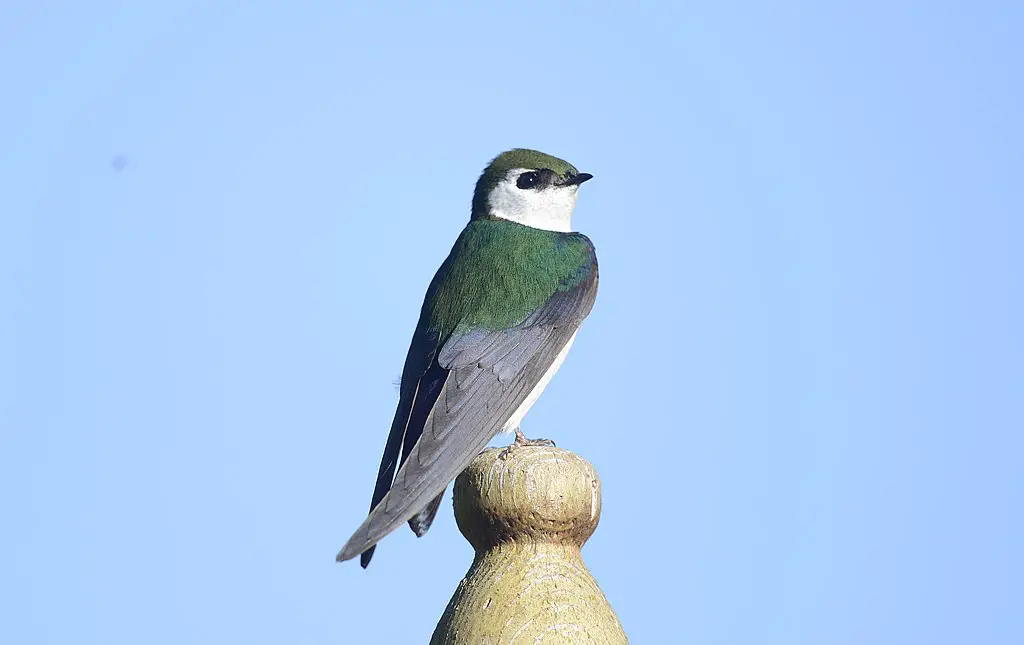
Violet-green Swallows live up to their name with brilliant green and violet colors. These swallows are common in the right areas, such as El Paso and Big Bend country. They may rarely occur throughout west Texas, including the Panhandle region.
The most similar species is Tree Swallows, which are a brilliant blue instead of green. Violet-green Swallows also have more white on the face and shorter tails. If you are looking at a juvenile bird, Tree Swallows will have white undersides and white on the face, while Violet-green Swallows will be a drab grey throughout.
This species nests in tree cavities and cliff crevices, and can commonly be found foraging in small groups.
Bank Swallow
- Dark breast band across chest
- Uncommon, often seen near water
- Migratory, most often seen April – September
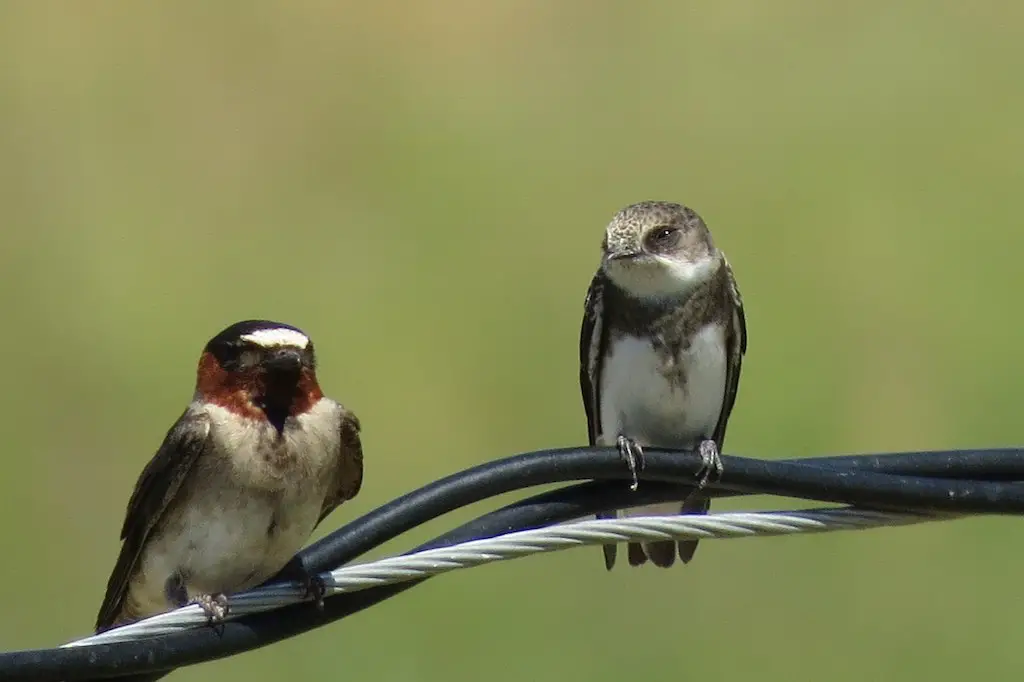
Bank Swallows are an uncommon species that can be found anywhere in Texas during migration, and breeds along the southern border in the Hill Country and South Texas Plains ecoregions.
Bank Swallows nest in colonies, burrowing cavities into sandy banks. They mostly forage over water, marshy areas, and wet meadows.
The most similar species is a Tree Swallow juvenile, which can have a dusky breast band, but it is not as distinct and contrasted as in Bank Swallows.
Purple Martin
- Largest swallow species in Texas
- Forked tail
- Male is iridescent purple, females show more gray
- Nests exclusively in man-made structures in Texas
- Migratory, seen February – September
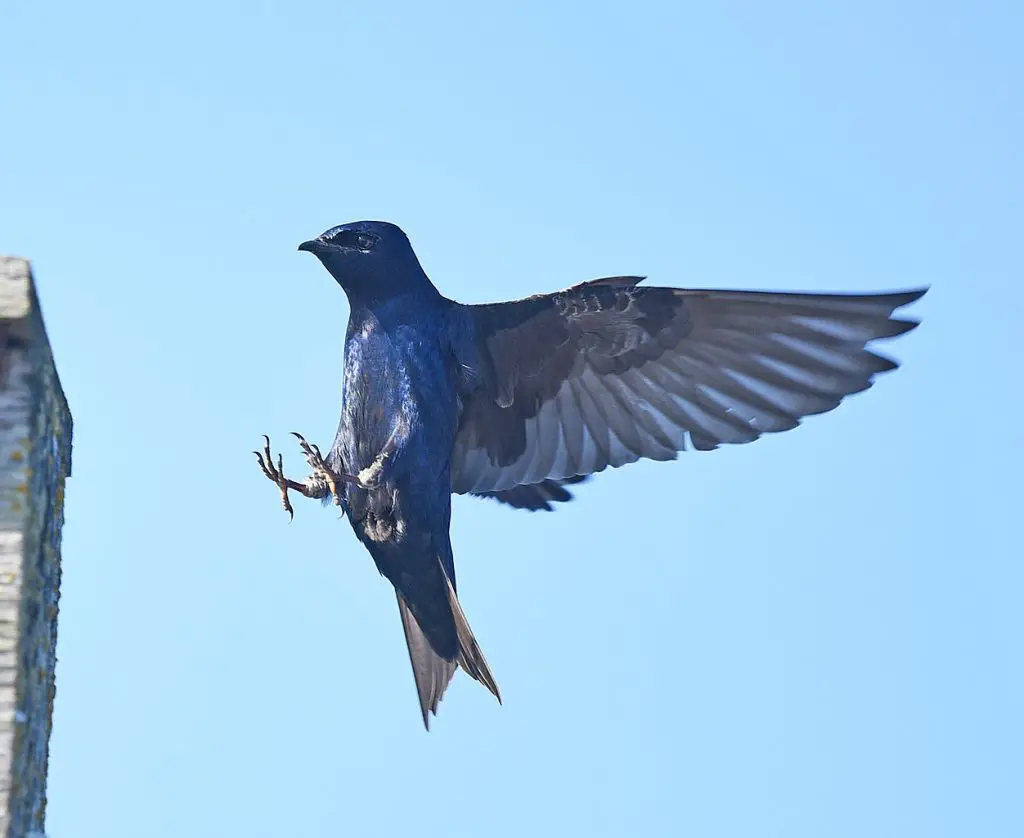
Purple Martins are most well-known for being a colony-nesting species that uses man-made nest box structures, commonly known as martin houses. These come in all shapes, from mock mansions and hotels to teardrop cavities on tall poles.
They are the largest swallow species in Texas, and in North America.
Purple Martins can be found just about anywhere in Texas, although rare in western Texas. They easiest to find when a colony has established nesting at a martin house.
During migration, martins occur in large flocks as they stage (foraging to fatten up for migration) before moving towards South America.
You may hear a birder exclaim “we’ve got flying pumas!” The origin of this nickname is the four-letter banding code for the species, which is PUMA (PUrple MArtin).


